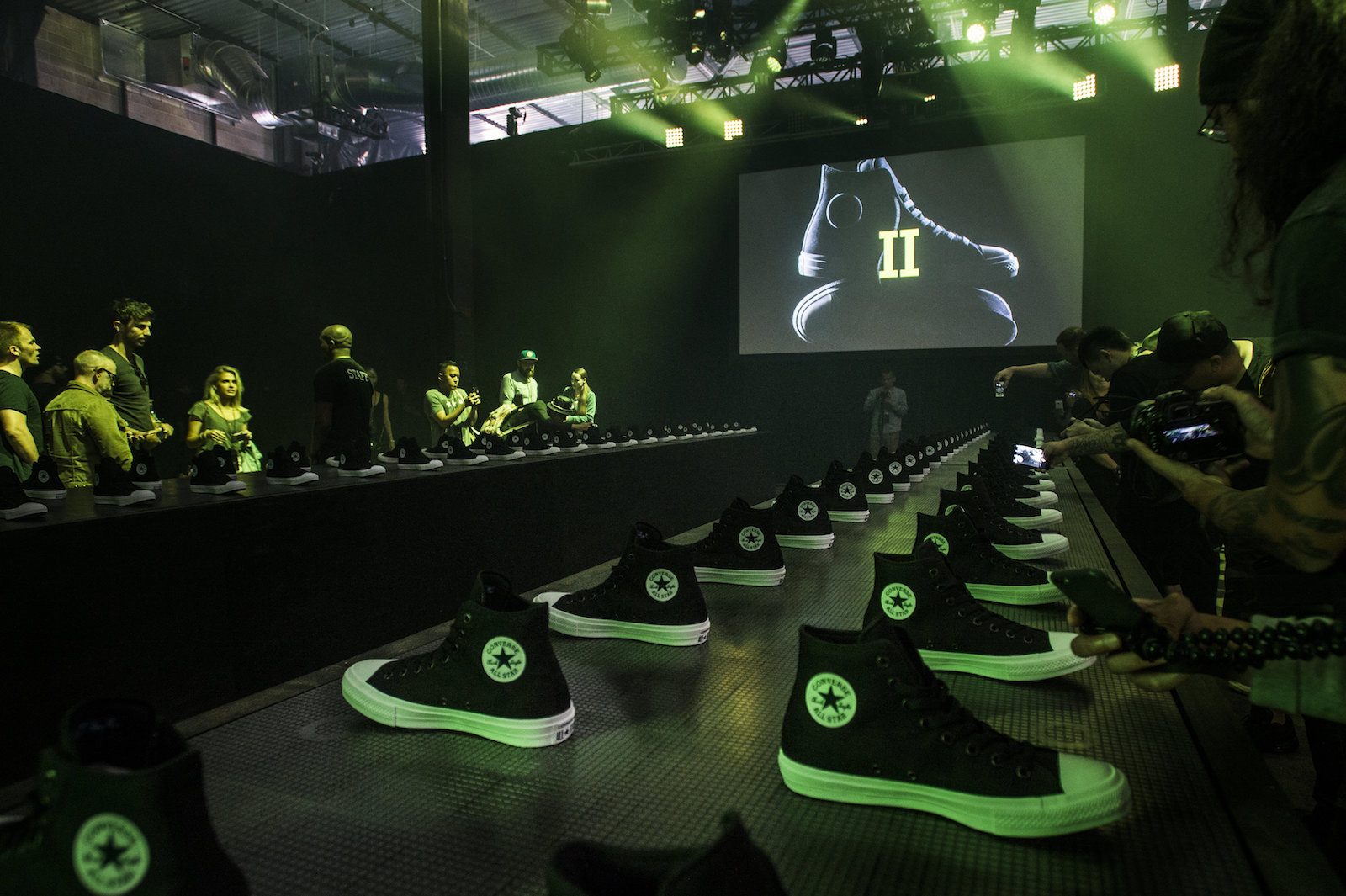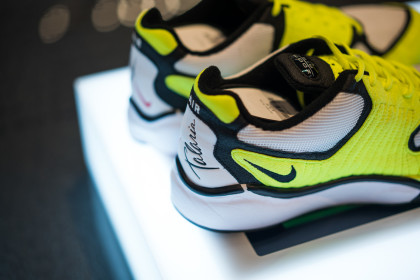
The Chuck Taylor II
Converse’s most iconic silhouette receives an enormous under-the-hood overhaul
Same, same, but different. After hopping around multiple cities, time-zones and landscapes for a week in one pair of shoes, I finally feel qualified to write a review about Converse’s most celebrated release of the 21st century, the #ChuckII.
The original Chuck Taylor shoe, one of the first ever shoes to be named after an athlete endorsement, was released in 1917 and was available in one single color, white. 51 years later the Chuck underwent its first design change, adding a black version. It took another 20 years for the shoe to see its first taste of color, and over the past two decades, hundreds of colors, fabrics, and customizations both sanctioned and DIY have adorned the cultural icon.

Arriving in Boston for the reveal event the old adage, ‘If it ain’t broke, don’t fix it,’ bounced around conversations among editors scattered throughout the hotel, each speculating on what would be changed. I feel compelled to mention that the original Chuck Taylor currently sells at a rate of 2 pairs every second, roughly 62 million pairs annually. Selling that many pairs globally should make you ask yourself, ‘why tinker with the formula?’ Segway to my first question I asked Richard Copcutt, Vice President/General Manager of Converse All Star, ‘What if consumers react the same way as they did to New Coke?’
The brand successfully achieved their goal. At a glance, the Chuck II is nearly indistinguishable from its predecessor, unless of course you’re the one wearing the new shoe. In our current fashion climate, designers have put everything they could into a shoe. From lights, to air bubbles, from wheels to wings, its has occasionally spiraled out of control. The Chuck II could have easily suffered a similar fate; an over-design. Thankfully, the design team held strictly to one single order, ‘Don’t f*** up the Chuck.’

Instead of the function du jour, the Chuck II differs from its predecessor by improving only on its pain-points while leaving everything else status quo. Here’s what you’ll care about most; a significantly improved footbed. Thanks to technology it borrowed from its parent company Nike Inc, the Chuck II features a Lunarlon footbed, significantly more comfortable than before. It also provides a more snug fit to your foot as well as contributes to reducing the weight of the shoe as a whole. Next is the tongue. The tongue is now fastened, held in place by elastics, ending the ‘which side of my foot just never in the middle’ game that was oh so much fun. The third significant improvement, although not a technical feature, is the improved canvas. As part of the overall aesthetic of the shoe, along with tonal stitching and eyelets it contributes to a more refined, mature look while retaining its classic silhouette.

If you’re expecting to slip on the Chuck II and feel like you’re walking on pillows, my advice is come back down to reality, but if you’re a fan of the Chuck Taylor and happen to be picking out which pair of shoes to grab in the morning that can last you a full day no matter what surprises await, you’ll be incredibly satisfied.
Bottom line is with the Chuck II, Converse has eloquently re-crafted one of the most loved and recognizable shoes with state of the art technology. The only element that remains to be seen is if the Chuck II will age as gracefully as its predecessor with wear over time.
Same, same, but different. After hopping around multiple cities, time-zones and landscapes for a week in one pair of shoes, I finally feel qualified to write a review about Converse’s most celebrated release of the 21st century, the #ChuckII.
The original Chuck Taylor shoe, one of the first ever shoes to be named after an athlete endorsement, was released in 1917 and was available in one single color, white. 51 years later the Chuck underwent its first design change, adding a black version. It took another 20 years for the shoe to see its first taste of color, and over the past two decades, hundreds of colors, fabrics, and customizations both sanctioned and DIY have adorned the cultural icon.

Arriving in Boston for the reveal event the old adage, ‘If it ain’t broke, don’t fix it,’ bounced around conversations among editors scattered throughout the hotel, each speculating on what would be changed. I feel compelled to mention that the original Chuck Taylor currently sells at a rate of 2 pairs every second, roughly 62 million pairs annually. Selling that many pairs globally should make you ask yourself, ‘why tinker with the formula?’ Segway to my first question I asked Richard Copcutt, Vice President/General Manager of Converse All Star, ‘What if consumers react the same way as they did to New Coke?’
“We listened and took it to heart that people love their Chucks and want sneakers that are built to enable them to do more. The Chuck II is the full expression of this consumer obsession, staying true to the DNA of the original.”The brand successfully achieved their goal. At a glance, the Chuck II is nearly indistinguishable from its predecessor, unless of course you’re the one wearing the new shoe. In our current fashion climate, designers have put everything they could into a shoe. From lights, to air bubbles, from wheels to wings, its has occasionally spiraled out of control. The Chuck II could have easily suffered a similar fate; an over-design. Thankfully, the design team held strictly to one single order, ‘Don’t f*** up the Chuck.’

Instead of the function du jour, the Chuck II differs from its predecessor by improving only on its pain-points while leaving everything else status quo. Here’s what you’ll care about most; a significantly improved footbed. Thanks to technology it borrowed from its parent company Nike Inc, the Chuck II features a Lunarlon footbed, significantly more comfortable than before. It also provides a more snug fit to your foot as well as contributes to reducing the weight of the shoe as a whole. Next is the tongue. The tongue is now fastened, held in place by elastics, ending the ‘which side of my foot just never in the middle’ game that was oh so much fun. The third significant improvement, although not a technical feature, is the improved canvas. As part of the overall aesthetic of the shoe, along with tonal stitching and eyelets it contributes to a more refined, mature look while retaining its classic silhouette.

If you’re expecting to slip on the Chuck II and feel like you’re walking on pillows, my advice is come back down to reality, but if you’re a fan of the Chuck Taylor and happen to be picking out which pair of shoes to grab in the morning that can last you a full day no matter what surprises await, you’ll be incredibly satisfied.
Bottom line is with the Chuck II, Converse has eloquently re-crafted one of the most loved and recognizable shoes with state of the art technology. The only element that remains to be seen is if the Chuck II will age as gracefully as its predecessor with wear over time.




